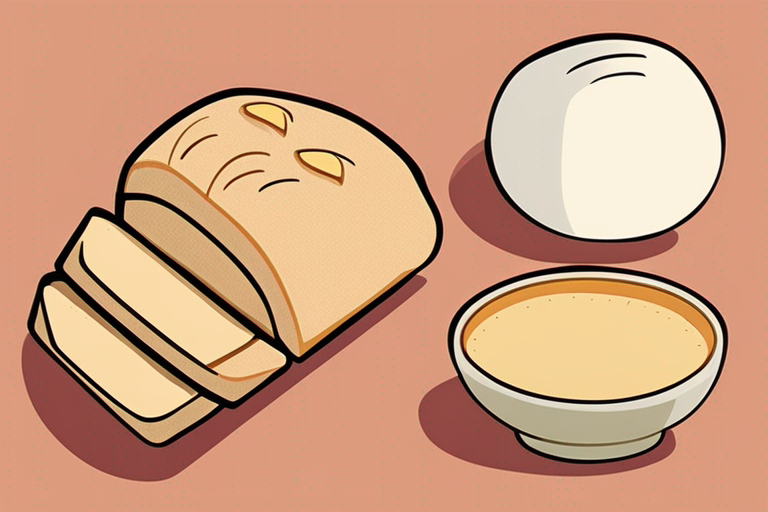
Signs that Honey Oat Bread Has Gone Bad
Get Your Free Food Safety Cheat Sheet
30 most common foods with instant answers. Print it and stick it on your fridge—completely free!
Signs that Honey Oat Bread Has Gone Bad
When it comes to enjoying a delicious loaf of honey oat bread, freshness is key. Whether you've baked it at home or purchased it from a bakery, knowing the signs that your bread has gone bad is essential to prevent foodborne illnesses and ensure a pleasant eating experience. In this comprehensive guide, we'll explore the indicators that your honey oat bread may have spoiled and provide you with practical tips on how to store it properly to maintain its freshness. (Honey)
How to Tell If Your Honey Oat Bread Has Gone Bad
Visual Signs
- Mold Growth: One of the most obvious signs that your honey oat bread has gone bad is the presence of mold. Check the surface of the bread for any fuzzy green, white, or black spots.
- Discoloration: If the bread has changed color significantly, especially if it has darkened or developed dark spots, it may indicate spoilage.
- Unusual Texture: Spoiled bread may feel excessively hard, rubbery, or slimy to the touch.
Smell Test
- Off Odor: Freshly baked honey oat bread should have a pleasant, sweet aroma. If you notice any sour, musty, or off-putting smells, it's a sign that the bread has gone bad.
Taste Test
- Flavor Changes: If your honey oat bread tastes sour, bitter, or stale, it's best to discard it to avoid potential food poisoning.
Time and Storage
- Expiration Date: Check the expiration date on the packaging or the date you baked the bread. Consuming bread past its prime can lead to foodborne illnesses.
- Storage Conditions: Improper storage can accelerate the spoilage of honey oat bread. Make sure to store it in a cool, dry place away from direct sunlight.
Proper Storage Tips for Honey Oat Bread
1. Use Airtight Containers
- Store your honey oat bread in airtight containers or resealable plastic bags to prevent exposure to air and moisture, which can hasten spoilage.
2. Refrigeration
- If you live in a humid climate or want to extend the shelf life of your honey oat bread, consider refrigerating it. However, be aware that refrigeration can make the bread stale faster.
3. Freezing
- For longer-term storage, you can freeze honey oat bread. Wrap the bread tightly in plastic wrap or aluminum foil before placing it in a freezer-safe bag. Thaw the bread at room temperature when you're ready to enjoy it.
4. Avoid Moisture
- Moisture is the enemy of bread. Keep your honey oat bread away from moisture sources like steam, condensation, or wet countertops to prevent mold growth.
Conclusion
Maintaining the freshness of your honey oat bread is crucial for both taste and food safety. By being aware of the signs of spoilage and following proper storage practices, you can enjoy your homemade or bakery-bought bread without any concerns. Remember to trust your senses – if your bread looks, smells, or tastes off, it's better to be safe than sorry and discard it. With these tips in mind, you can savor every bite of your delicious honey oat bread while prioritizing your health and well-being. (Honey)

Authoritative Food Safety References
These agencies and university labs inform every tip and health precaution we publish.
USDA FoodKeeper – Cold Storage Guidelines
Official refrigerator, freezer, and pantry timelines maintained by the U.S. Department of Agriculture.
Visit USDA FoodKeeperFDA Produce Safety Rule & Grower Guidance
Field-to-fridge handling practices that prevent contamination of fruits, vegetables, and leafy greens.
Visit FDA Produce SafetyCDC Foodborne Illness Prevention Hub
Surveillance-backed guidance on pathogens, symptoms, and steps to reduce foodborne illness risk.
Visit CDC Food SafetyUC Davis Postharvest Technology Center
University research detailing optimal storage atmospheres for produce after harvest.
Visit UC Davis PostharvestPenn State Extension – Home Food Preservation & Safety
Peer-reviewed extension bulletins on safe canning, chilling, and reheating practices.
Visit Penn State ExtensionHow can I tell if my honey oat bread has gone bad?
Can I still eat honey oat bread after the expiration date?
How should honey oat bread be stored to prolong its shelf life?
Can I still eat honey oat bread if it has been left out overnight?
Get Your Free Food Safety Cheat Sheet
30 most common foods with instant answers. Print it and stick it on your fridge—completely free! Want more? Upgrade to the complete guide with 70+ foods.
Scan your food directly and get instant safety info using our AI-powered camera feature.